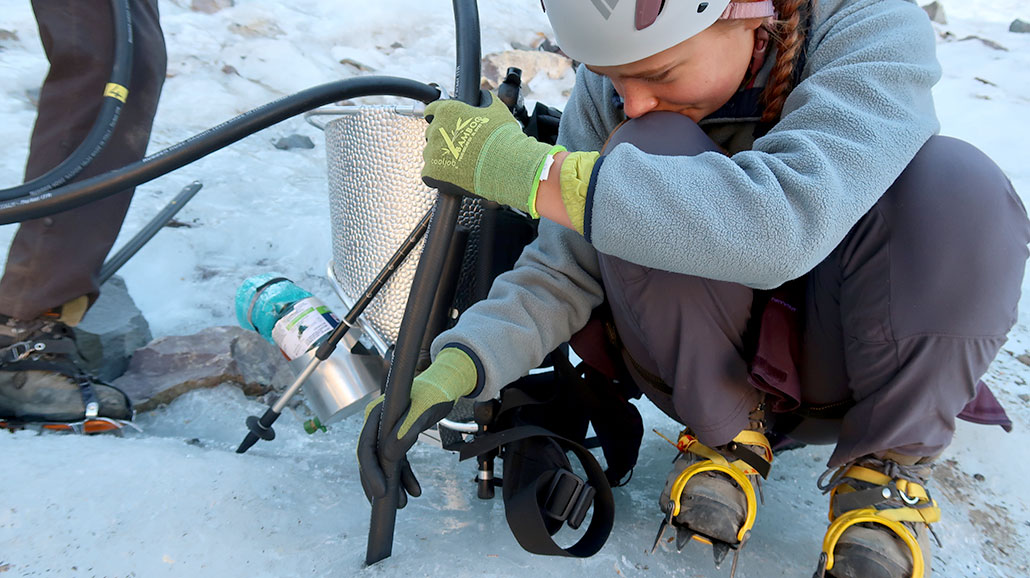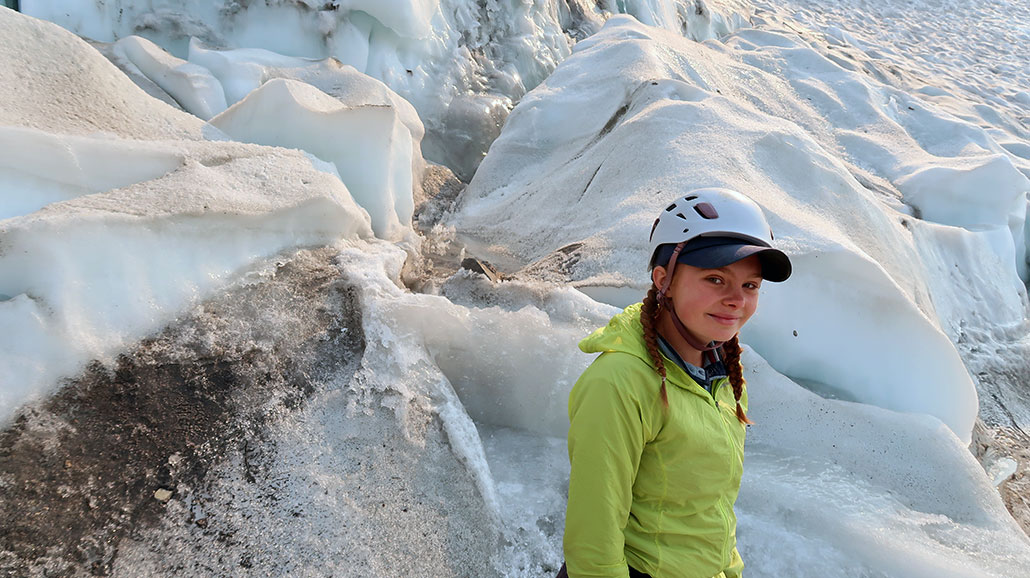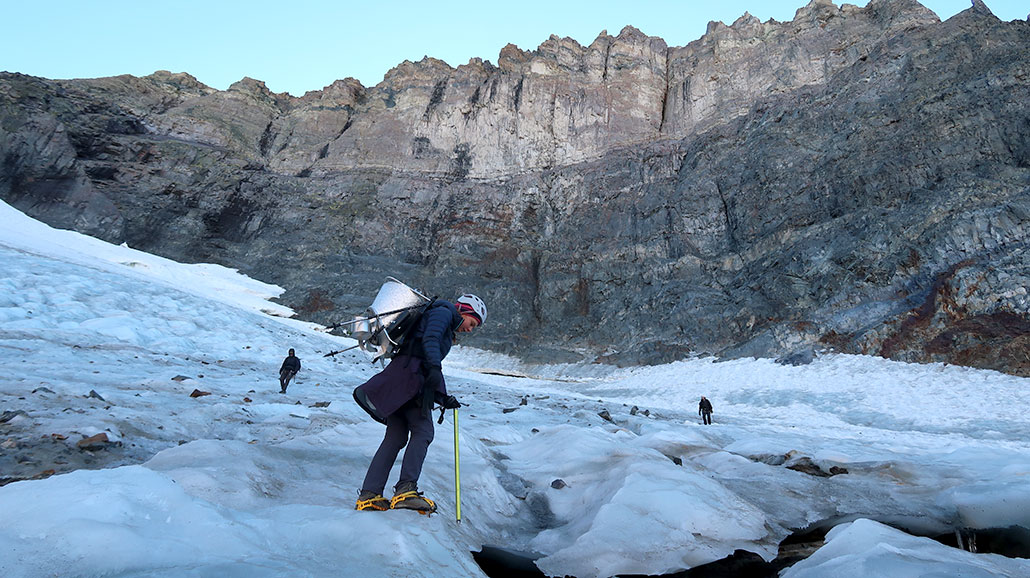Local glacier could be gone in a decade, young scientist finds
By drilling holes in the ice with steam, a teen showed the glacier’s days are numbered

Ellery McQuilkin drills into the glacier with steam. She and her support team got special training to move safely on the ice.
Geoff McQuilkin
Climate change is coming for glaciers. Many are losing ice as summers get warmer and winters are bringing less fresh snow to build them up again. But to know when exactly a glacier will be gone, scientists first have to know how big it is. That why Ellery McQuilkin, 16, trekked up a glacier with a large drill in tow. To find out how big the glacier was, she drilled holes in it.
Ellery is a junior at Lee Vining High School in California. “I live right near Yosemite National Park,” she notes. “I’ve spent a lot of time backpacking and hiking so I’ve sort of been around glaciers a fair amount.” Ellery also is interested in climate change. Scientists have already reported “big irreversible effects of climate change on glaciers,” she says. That’s even true near her, where she says glaciers are “actually melting away.” At this point, she fears, it could be “too late to do anything to save them.”
Her town of Lee Vining is very close to four small glaciers: the Conness, Dana, Kuna and Koip. No one actually knows how big — or small — these are, she says. To calculate their volume, one could theoretically multiply their height times depth times width. But depth is hard to find when only the top of a glacier is visible. The rock underneath might host sharp peaks or deep valleys. It might even be totally flat. “What the bottom of the glacier looks like, there’s no way to visually see that,” Ellery says.
To gauge that depth, she decided to try drilling test holes to the rock below.

Measuring thin ice
Scientists have other ways to calculate how much ice is in a glacier. But those ways are designed with large glaciers in mind. For small ones like those near Ellery, those techniques don’t really work. So to find the volume of the small glacier on Mount Dana, she brought a steam drill. It weighs about 15.8 kilograms (35 pounds). Ellery could carry it up the mountain to the glacier on her back.
“So there’s this big boiler. You fill it up with water,” Ellery explains, “and you heat it up.” The drill’s hose then shoots hot steam at high pressure to melt a very small hole in the ice. Ellery used the drill to poke holes all the way through the glacier at some points. Where the glacier was thicker, she drilled just partway through.
She then used the depths she measured with the drill — along with a computer model — to calculate the volume of the Dana glacier. Her tally comes to about 596,000 cubic meters (778,500 cubic yards). That’s enough ice to fill a medium-sized football stadium. The deepest part of the glacier is around 30 meters (100 feet).
This glacier is very small — and shrinking. “Basically, in eight years, the Dana glacier will have melted away almost entirely,” Ellery projects. And the region will lose more than a white field of ice on Mount Dana. The glacier’s yearly meltwater supports a freshwater stream on which many animals and plants depend. “It is really just sad that this massive shaping force is going to disappear entirely,” she says. Adding to her frustration is that “people really aren’t even aware that it’s happening.”

The teen’s ice-cold project earned her a spot at the Regeneron International Science and Engineering Fair. Created by Society for Science, this yearly competition brought together nearly 2,000 finalists in 2021. They came from 64 countries, regions and territories to show off their science fair projects. (The Society for Science also publishes Science News for Students.) This year’s ISEF competition moved online due to the COVID-19 pandemic. There, Ellery’s project earned her first place in the Earth and Environmental Sciences category and $5,000.
Ellery hopes to continue measuring Dana glacier, as well others near her town. She wants to find points where people took old photos of the glaciers and compare those to new images. That should offer “this very clear documentation of the glacier as it melts,” she says. It’s probably too late to save the Dana glacier, she says. But if she can document how glaciers are changing, she thinks she might just spur people to act in time to save others.







